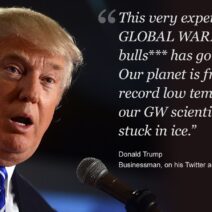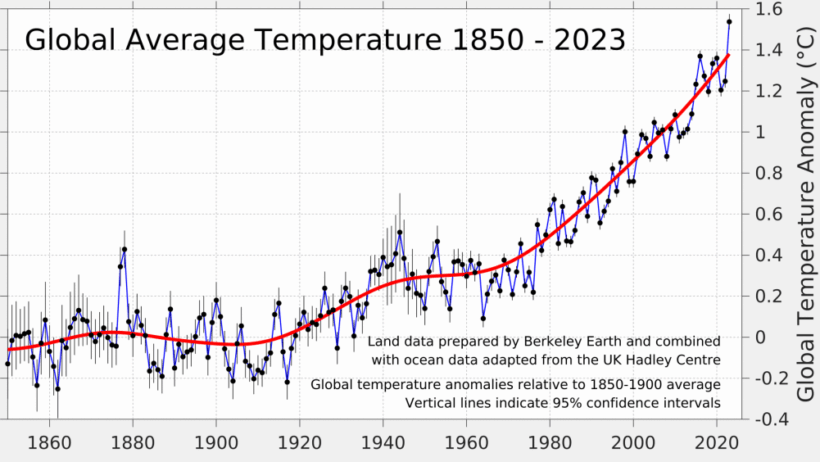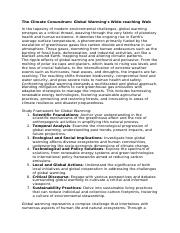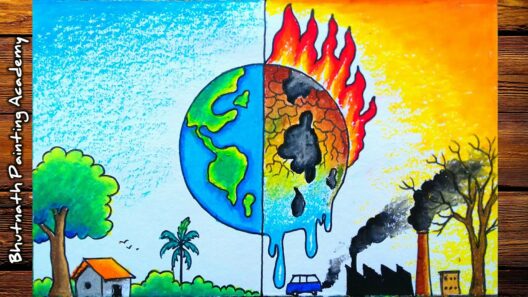In the contemporary discourse surrounding climate change, the term ‘global warming’ has evolved from being a mere hypothesis to an unequivocal scientific consensus. The overwhelming agreement among climatologists, oceanographers, and atmospheric scientists demonstrates a clarity that is not often experienced in scientific inquiries. This article will elucidate the various dimensions of this consensus, examining the data accumulation processes, methodologies employed, and the consequential implications for policy and societal norms.
At the heart of the scientific consensus is the synthesis of data from a multitude of independent studies. Over the past few decades, instrumental records, satellite observations, and climate models have coalesced to depict a clear picture of rising temperatures. According to the Intergovernmental Panel on Climate Change (IPCC), which aggregates research from thousands of scientists globally, the last decade was the hottest on record. The compilation of evidence from different regions, timescales, and methodologies adds layers of robustness to the findings, reinforcing the consensus that human activities—specifically fossil fuel combustion, deforestation, and industrial processes—are primary drivers of recent climatic changes.
One compelling aspect of climate science is its reliance on myriad methodologies. Climatic analyses utilize direct measurements from thermometers, satellite observations of heat and energy distribution, and proxy data such as ice cores and tree rings, which provide historical insights spanning thousands of years. Each of these methods corroborates the overarching narrative: global temperatures are increasing at an unprecedented rate. These findings are not merely statistical anomalies; they embody a convergence of evidence from diverse domains within the physical sciences.
Moreover, the role of peer-reviewed research cannot be understated. Thousands of studies undergo rigorous evaluation before being published, ensuring that the conclusions drawn are not only credible but also replicable. A striking illustration of this peer-reviewed corpus is the “Climate Change 2021: The Physical Science Basis” report, which encapsulated contributions from over 230 authors worldwide. The report makes it abundantly clear: human influence is the dominant cause of warming observed since the mid-20th century.
While the scientific community presents a unified stance regarding the existence and drivers of climate change, public perception often lags behind. This discrepancy may arise from misinformation campaigns, the complexities of scientific communication, and the inherent challenge of understanding abstract concepts such as greenhouse gas concentration levels. Educational initiatives aimed at demystifying climate science are essential in bridging this gap. Clear communication of core concepts, such as the greenhouse effect, attribution studies, and the implications of climate feedback mechanisms, can contribute to a more informed public.
The consensus extends beyond temperature changes. It encompasses a broad spectrum of phenomena resulting from anthropogenic climate alteration, including increased frequency and intensity of extreme weather events, habitat loss, and rising sea levels. For instance, the higher ocean temperatures, as referenced in recent observations, are not just a temperature issue; they affect marine ecosystems, lead to coral bleaching, and increase the occurrence of hurricanes. The consensus on these cascading effects is vital for understanding the broader implications of climate change on biodiversity and human livelihoods.
Furthermore, socioeconomic discourse has become intricately intertwined with climate science. The ramifications of global warming are not evenly distributed; vulnerable populations often bear the brunt of climate-related adverse effects. This has fuelled a critical discourse regarding climate justice, emphasizing the moral and ethical dimensions of the climate crisis. It posits that affluent nations, historically responsible for the majority of emissions, have a duty to support developing nations in mitigating and adapting to climate change. Effective global collaboration is not just a political necessity; it is a moral imperative.
In addressing the climate crisis, the consensus highlights several pathways forward. Transitioning from fossil fuels to renewable energy sources is paramount. Solar, wind, and hydroelectric power are infinitely more sustainable and do not emit greenhouse gases post-installation. The IPCC has repeatedly stressed the importance of achieving net-zero emissions by mid-century, necessitating robust governmental action and individual commitment to sustainable practices. Policies and incentives that promote clean energy technologies, bolster energy efficiency, and curb emissions are fundamental in steering societal behaviors toward sustainability.
Innovation in technology plays a crucial role in this transition. Carbon capture and storage (CCS), advancements in battery technology, and improvements in energy efficiency are all pivotal to mitigating the effects of climate change. Nevertheless, technological solutions alone are insufficient; what is required is a holistic approach integrating social, economic, and environmental strategies. This cross-disciplinary collaboration can facilitate the transitional shift needed to create a resilient society.
The consensus on global warming is founded not merely on conjecture but on painstaking research and rigorous evaluation. The facts delineate an urgent narrative: climate change is real, it is anthropogenic, and it requires immediate action. As societies grapple with this reality, they must embrace not only the scientific implications but also the ethical responsibilities that accompany them. Engaging in informed discussions, advocating for transparent policies, and supporting sustainable practices will be essential steps in addressing one of humanity’s most pressing challenges. In sum, science speaks clearly about global warming, and the time for action is now.






